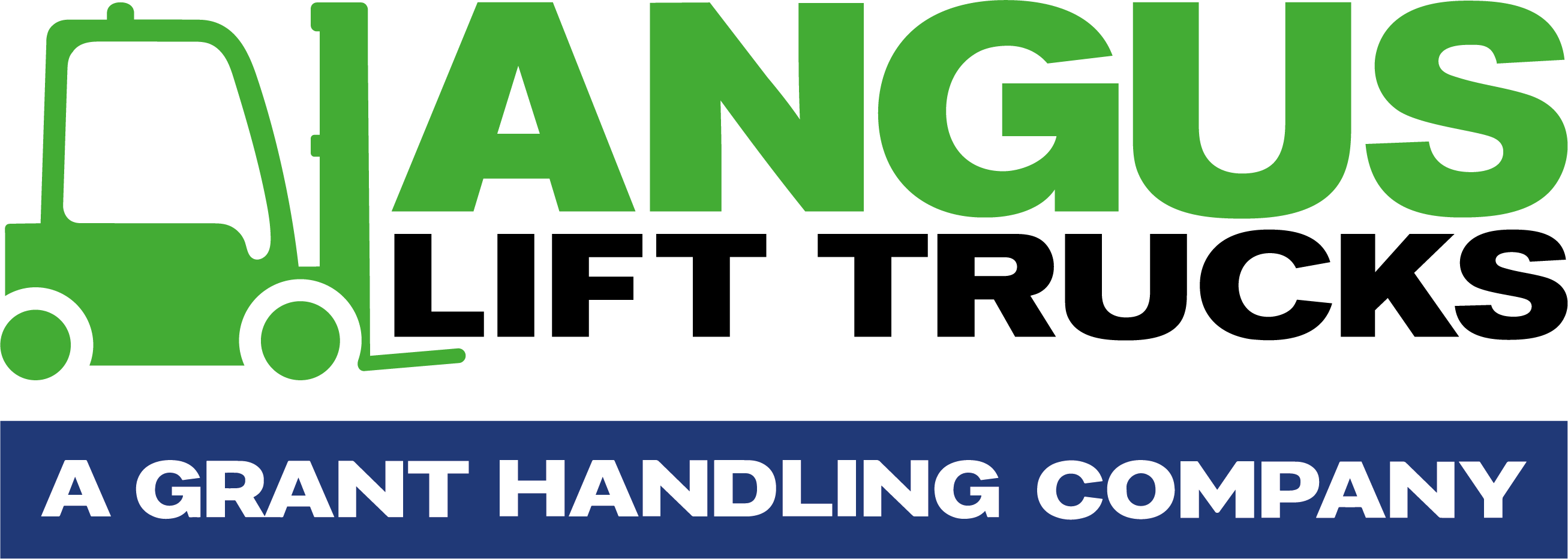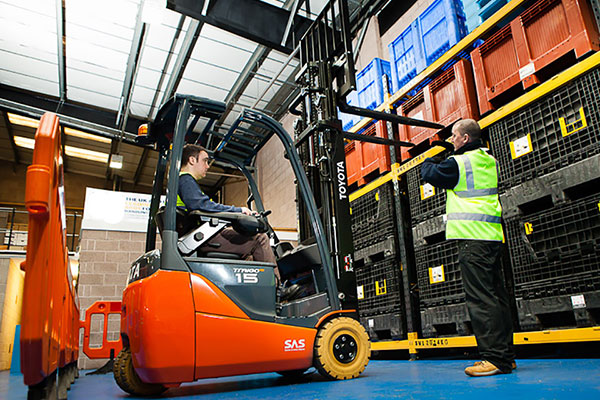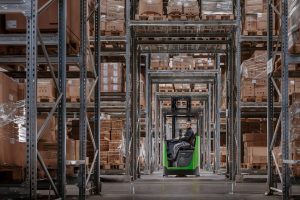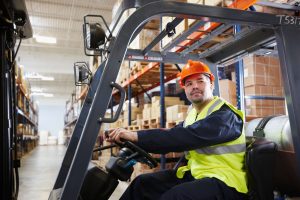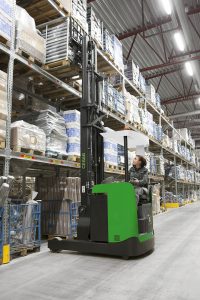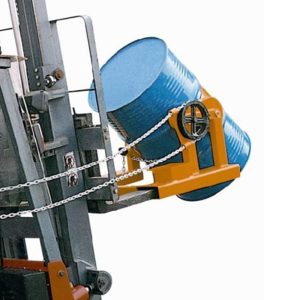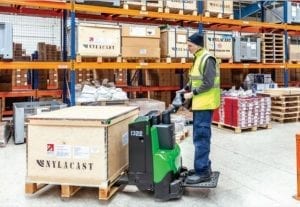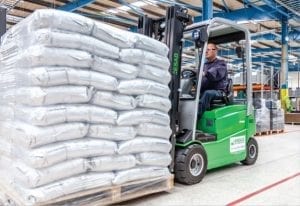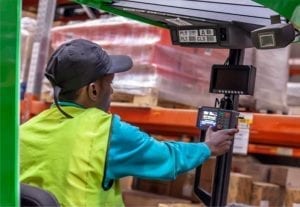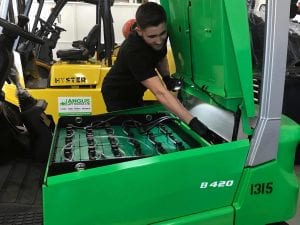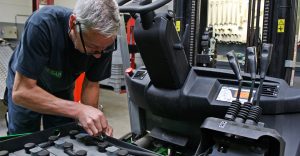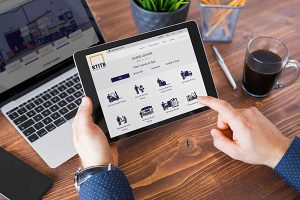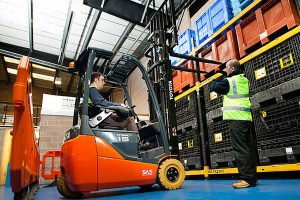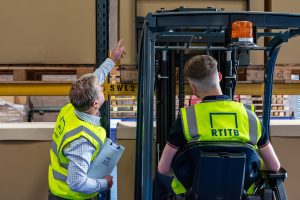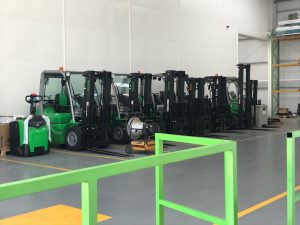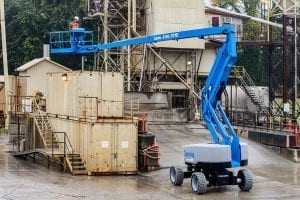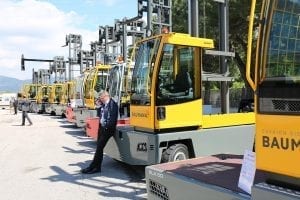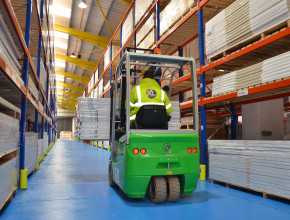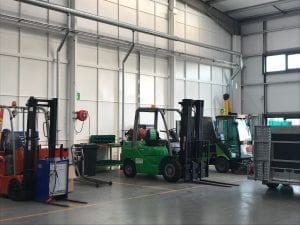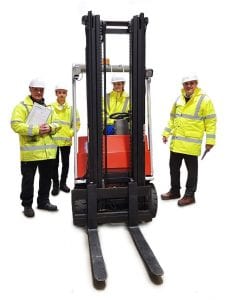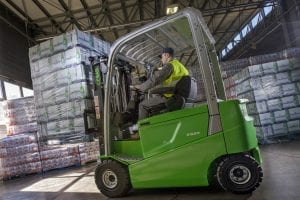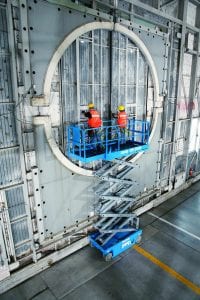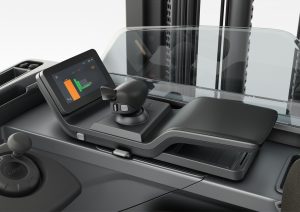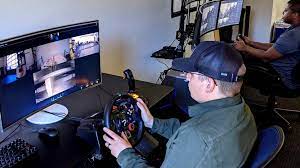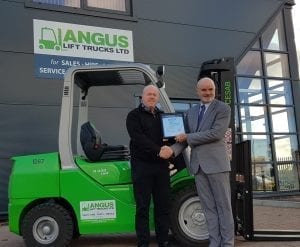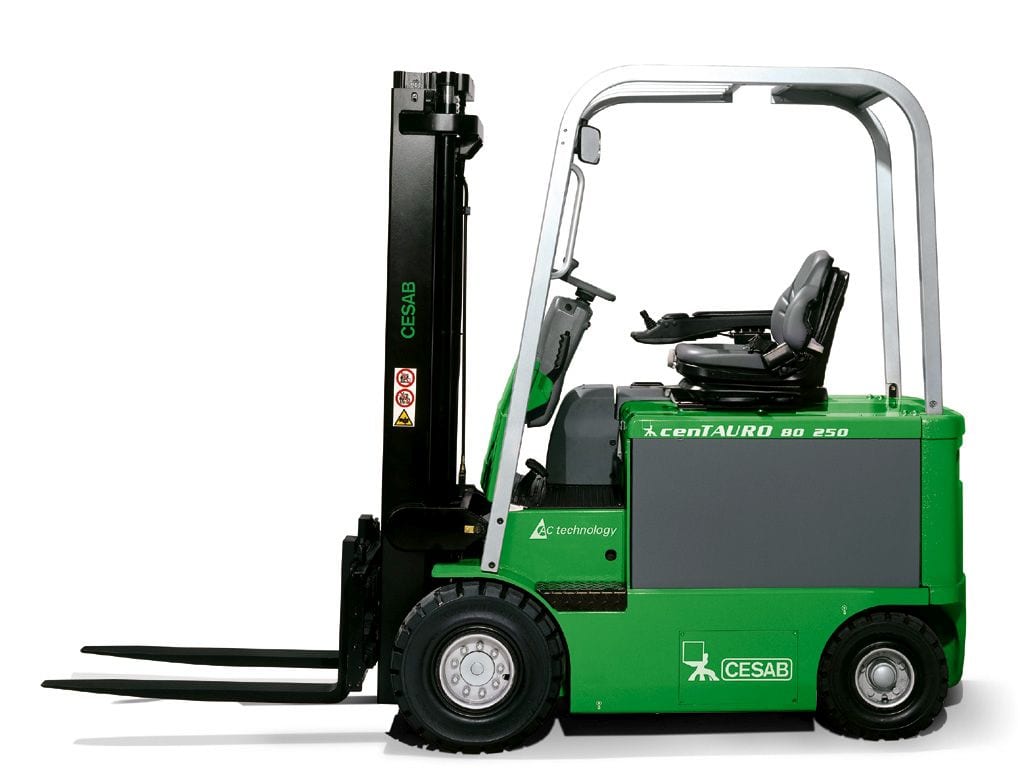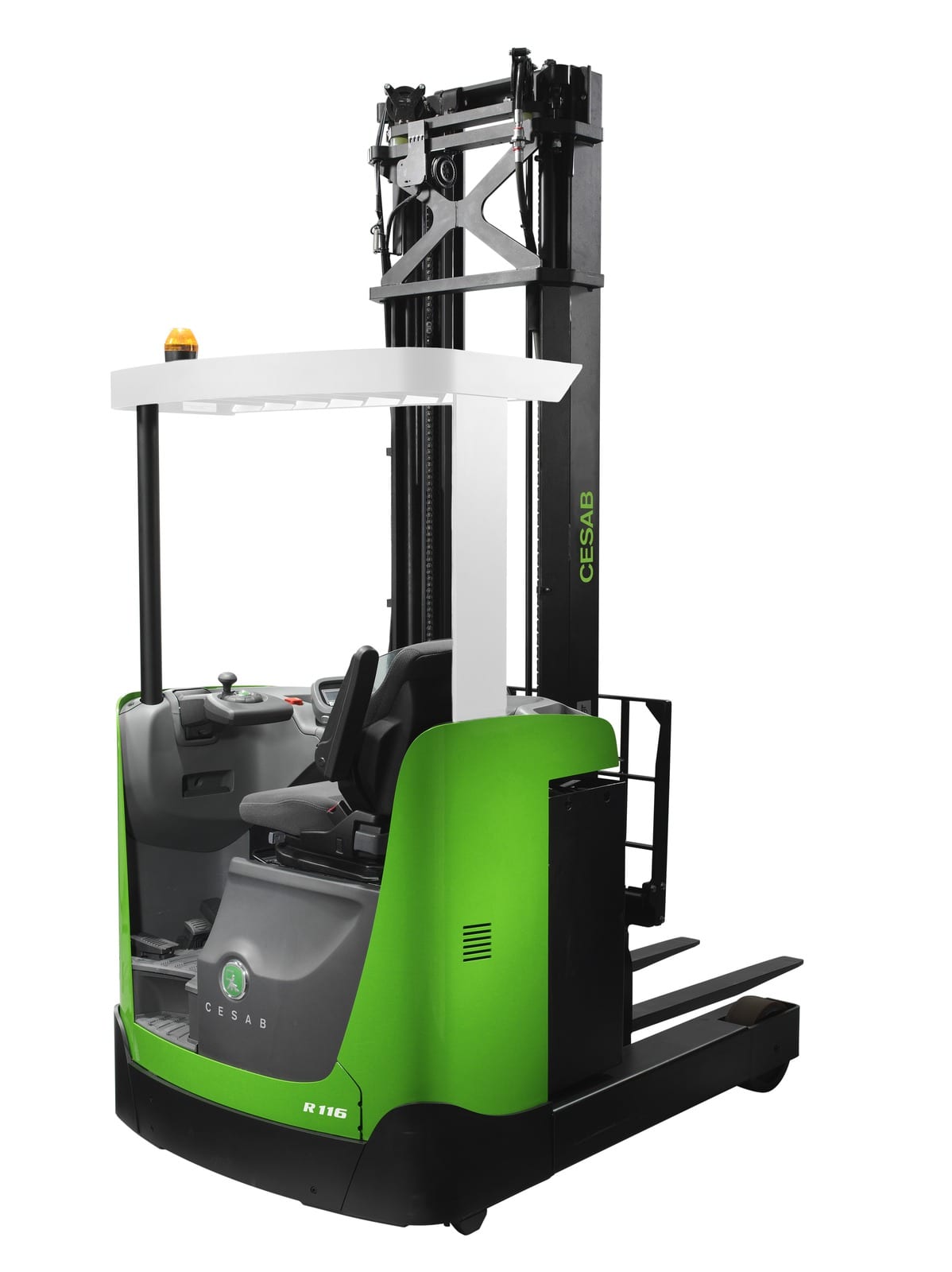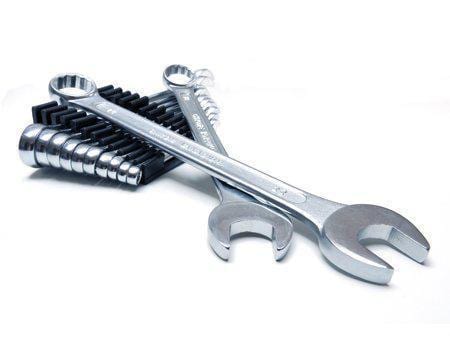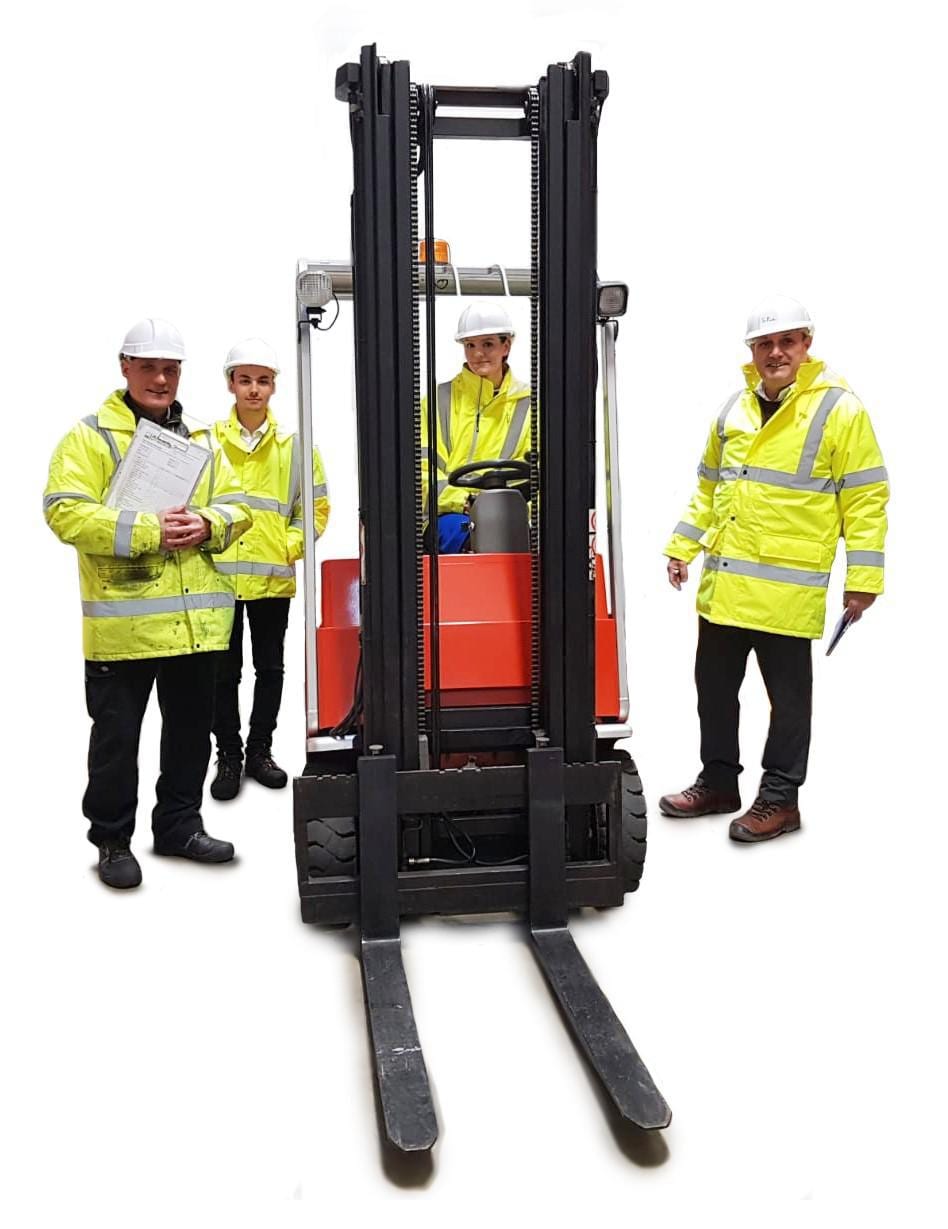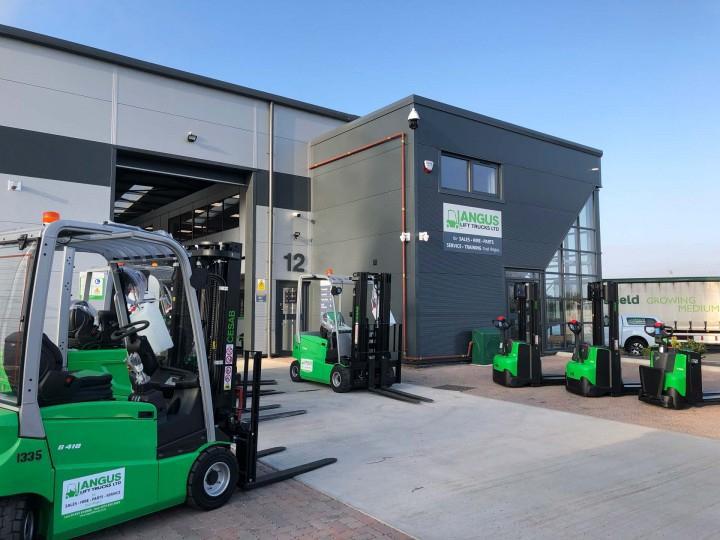The Lifting Operations and Lifting Equipment Regulations (LOLER) are a set of health and safety regulations governing the safe use of lifting equipment in the workplace. Implemented on December 5, 1998, LOLER was introduced to ensure two things:
- The safe operation of lifting equipment
- To minimise the risks associated with lifting operations.
LOLER, often referred to as the “LOLER regs” or “lifting regulations,” applies to a wide range of equipment used for lifting or lowering loads. Relevant machines include cranes, forklifts, lifts, and even simple devices like slings and eyebolts. The regulations are fairly comprehensive and cover the equipment and the planning and execution of lifting operations.
Why is LOLER important?
The main purpose of LOLER is to prevent injuries and fatalities related to lifting operations. By setting stringent standards for equipment maintenance, inspection, and operation, LOLER is focused on creating a safer working environment across various industries. These regulations are particularly important in sectors like construction, manufacturing, and logistics because they involve frequent lifting operations that often involve heavy or awkward loads.
One of the key requirements of LOLER is the need for regular inspections and thorough examinations of lifting equipment. These LOLER inspections, or “LOLER checks,” must be carried out by competent persons at specified intervals.
The frequency of these inspections depends on the type of equipment and how it’s used. However, in general, they occur every 6 to 12 months. If the inspection is positive, a LOLER certificate is issued, confirming the equipment has met regulatory compliance.
Of course, LOLER testing goes beyond mere visual checks. It involves a comprehensive assessment of the equipment’s condition, including considerations like its structural integrity, safety features, and operational capabilities. This thorough examination ensures that the lifting equipment remains fit for purpose and can safely handle the required intended loads.
The importance of LOLER in workplace safety cannot be overstated. If not properly managed, lifting operations pose significant risks, including the potential for crushing injuries, falls from height, and equipment failure. Since its implementation, LOLER has contributed to a substantial reduction in lifting-related accidents by enforcing strict standards for equipment maintenance and operation.
Scope of LOLER
The Lifting Operations and Lifting Equipment Regulations (LOLER) have a broad scope, covering a wide range of equipment and industries.
Let’s take a look at what these regulations cover.
1. Types of Equipment Covered
LOLER applies to a diverse array of lifting equipment used in various work settings. Some common examples include:
- Cranes and lifting platforms.
- Forklift trucks and telehandlers.
- Hoists and winches.
- Passenger and goods lifts.
- Mobile elevating work platforms (MEWPs).
- Patient hoists in healthcare settings.
- Vehicle inspection hoists.
- Lifting accessories such as slings, chains, and shackles.
It’s worth noting that LOLER covers the primary lifting equipment and any attachments used to anchor, fix, or support the equipment.
2. Industries and workplaces affected
LOLER regulations impact a wide range of industries and workplaces where lifting operations occur. Some of the sectors that apply include:
- Construction
- Manufacturing
- Warehousing and logistics.
- Healthcare and hospitals.
- Hotels and restaurants.
- Offices with passenger lifts.
- Automotive repair shops.
- Offshore installations.
Essentially, any workplace that uses equipment for lifting or lowering loads, including people, falls under the purview of LOLER.
3. Exceptions and limitations
While LOLER’s scope is broad, there are some notable exceptions:
- Escalators
- Fall arrest ropes.
- Tipper trucks.
- Dentist chairs.
- Roller shutter doors.
- Pallet trucks.
While the items listed above may not be covered by LOLER, they are subject to their own other safety regulations, such as the Provision and Use of Work Equipment Regulations (PUWER). This means that even equipment exempt from LOLER must be maintained for safety and may require regular inspections.
Understanding the scope of LOLER is essential for businesses to ensure they comply with all relevant safety regulations. While the regulations cast a wide net it’s important to remember that safety considerations extend beyond just LOLER-covered equipment. If you are looking to hire LOLER-compliant forklifts across the UK, Angus Lift Trucks are proud to rent forklifts across the UK, in Leicestershire, Northamptonshire, Birmingham, Warwickshire, Nottinghamshire, Derbyshire, East Midlands, and West Midlands areas.
Key Requirements of LOLER
OK, so now that you understand the scope and importance of LOLER, it’s time to learn about the specific areas it looks at when evaluating the safety of lifting equipment.
1. Strength and stability
The Lifting Operations and Lifting Equipment Regulations (LOLER) mandate that all lifting equipment must be of adequate strength and stability for its intended use. This requirement ensures that the equipment can safely handle the loads it’s designed to lift without risk of failure or collapse.
#1. Equipment suitability:
Employers must assess whether the lifting equipment is sufficiently strong for the proposed use, factoring in the combination of forces it will be subjected to and the weight of any associated accessories.
Looking to Buy or Hire
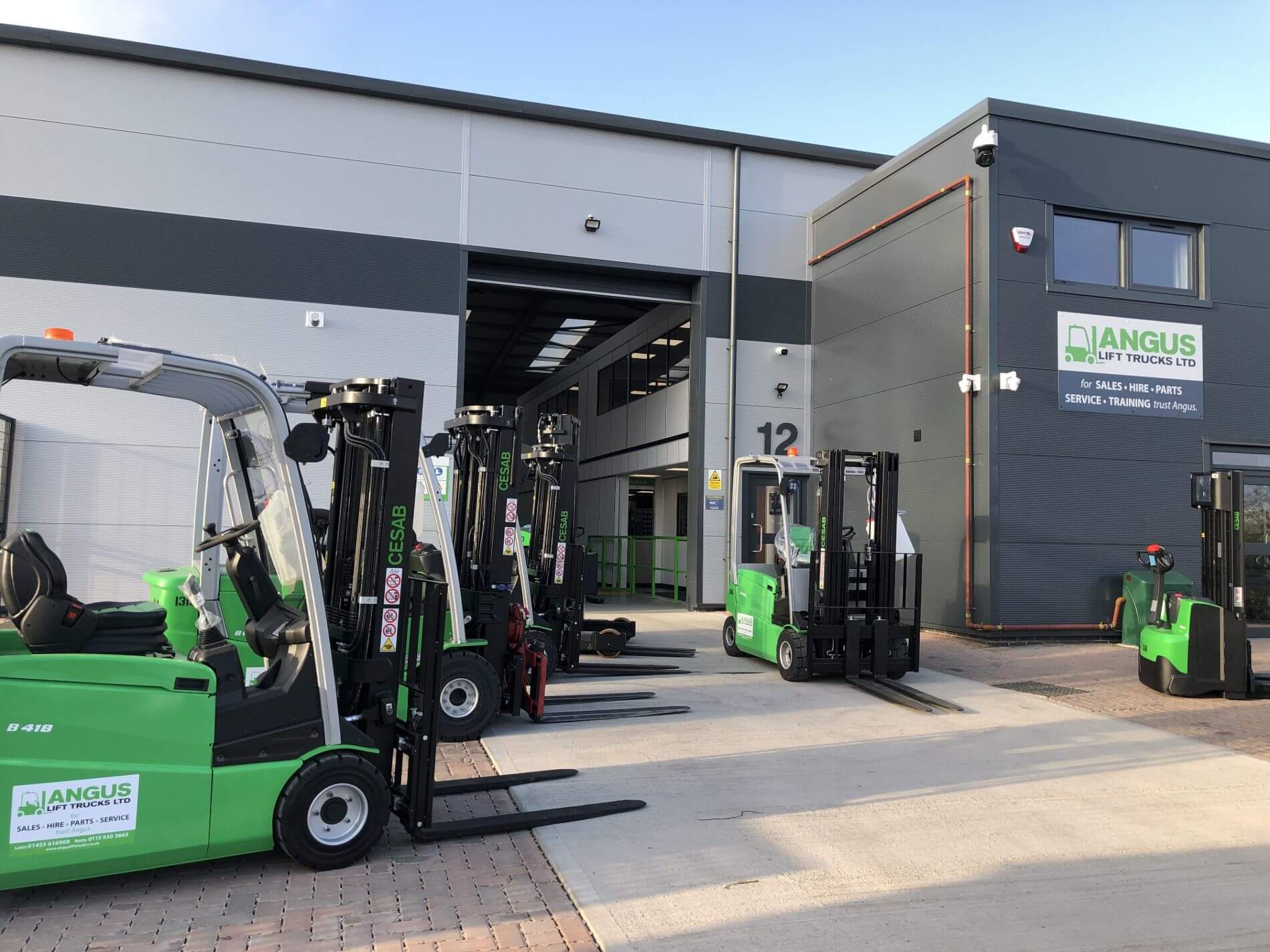
a forklift?
With 35+ years of experience, we offer our most competitive rates, flexible finance, 4h service promise & more!
#2. Load capacity marking:
All lifting equipment must be clearly marked with its Safe Working Load (SWL). This number is crucial so that operators can ensure they don’t exceed the equipment’s capacity.
2. Safe positioning and installation
LOLER regulations require that lifting equipment be positioned or installed in ways that minimise risks to operators and bystanders.
#1. Risk minimisation:
Equipment should be set up to reduce the risk of the load striking a person or unintentionally being released.
#2. Proper setup:
The stability of the equipment must be ensured, including protection against overturning where necessary.
3. Planning and supervision
Every lifting operation must be properly planned, appropriately supervised, and carried out safely.
#1. Role of competent persons:
A competent person must plan lifting operations, considering factors such as the load’s weight, size, and centre of gravity, as well as the environment in which the lift will take place.
#2. Importance of planning:
Proper planning helps identify potential hazards and ensures that appropriate resources are allocated for the safe completion of the lifting operation.
4. Safe use of equipment
LOLER emphasises the importance of safe equipment operation to prevent accidents and injuries.
#1. Training requirements:
Operators must receive adequate training on the safe use of lifting equipment, including how to inspect equipment before use and secure loads properly.
#2. Operational guidelines:
Best practices for safe operation should be established and followed, including regular equipment checks and adherence to load limits.
5. Marking and information
Clear and visible markings on lifting equipment are essential for safe operation.
#1. Required information:
Equipment must be marked with its SWl. If equipment is used to lift workers, it must also list the maximum number of people that can be lifted.
#2. Importance of markings:
These markings ensure that operators can quickly identify the equipment’s capabilities and limitations, and therefore reduce the risk of overloading or misuse.
6. Thorough Examinations and Inspections
Comprehensive examinations and inspections form an essential part of LOLER.
6.1. Frequency of Examinations
LOLER requires regular, thorough examinations of lifting equipment.
#1. Timeframes:
Equipment used to lift people must be examined at least every six months, as must all lifting accessories. Other lifting equipment should be examined at least every 12 months.
#2. Additional examinations:
Inspections are also required after installation, significant changes in conditions, or long periods out of use.
Looking to Buy or Hire

a forklift?
With 35+ years of experience, we offer our most competitive rates, flexible finance, 4h service promise & more!
6.2 Competent Person Requirements
These thorough examinations must be carried out by a competent person with the necessary knowledge and expertise.
#1. Qualifications:
The examiner should have appropriate practical and theoretical knowledge of the lifting equipment that is being examined.
#2. Responsibilities:
The competent person is responsible for conducting the examination, identifying any defects, and providing a detailed report of their findings.
7. Examination process
LOLER defines a “thorough examination” under LOLER as a systematic and detailed inspection of the lifting equipment.
#1. Inspection scope:
The examination includes checking the equipment’s overall condition, wear and tear, and any potential safety issues.
#2. Documentation:
A written report must be provided after each examination, detailing the results and any further actions required.
8. Record keeping and documentation
Proper record-keeping is another crucial aspect of LOLER compliance.
#1. Types of records:
Records should include thorough examination reports, EC declarations of conformity, and details of any repairs or maintenance carried out.
#2. Retention duration:
Records of thorough examinations should be kept until the next examination for most equipment or two years for accessories.
#3. Importance:
Good record-keeping helps track equipment condition over time and contributes to effective maintenance.
9. Risk assessment and management
LOLER also requires ongoing risk assessment and management for all lifting operations.
#1. LOLER-specific assessments:
Risk assessments should consider the specific hazards associated with lifting operations, accounting for things like load instability or equipment failure.
#2. Hazard mitigation:
All identified risks must be addressed through appropriate control measures. These actions can include additional training or equipment modifications.
10. Training and competence
Operator competence is a vital aspect of LOLER compliance.
#1. Required training:
Operators and supervisors must receive appropriate training on the safe use of lifting equipment and the specific risks associated with their work.
#2. Ongoing assessment:
Regular competence assessments help ensure that operators maintain their skills and knowledge over time.
11. Maintenance and repairs
Regular scheduled maintenance and prompt repairs are essential for keeping lifting equipment safe and compliant.
#1. Routine maintenance:
A schedule of regular maintenance should be established and strictly followed.
#2. Handling defects:
Any defects identified during examinations or use must be reported and addressed promptly.
By adhering to these key requirements of LOLER, employers can ensure the safety of their lifting operations and maintain compliance with the regulations. Regular LOLER inspections, proper training, and diligent record-keeping are all big parts of creating a safe working environment for lifting operations.
LOLER Compliance in Specific Industries
The Lifting Operations and Lifting Equipment Regulations (LOLER) apply across various sectors. However, their implementation can vary depending on the specific needs and challenges of each industry.
Let’s look at how LOLER is applied in four key sectors:
1. Construction
In the construction industry, LOLER regulations play a big role in ensuring safety on building sites.
Common lifting equipment in this sector includes:
- Tower cranes.
- Mobile cranes.
- Excavators with lifting attachments.
- Telehandlers
LOLER compliance in construction involves:
- Regular inspections of lifting equipment, often in harsh outdoor conditions.
- Proper planning of lifting operations, considering changing site conditions.
- Ensuring all operators are trained and competent to use specific equipment.
- Clear communication protocols for crane operators and banksmen.
Looking to Buy or Hire

a forklift?
With 35+ years of experience, we offer our most competitive rates, flexible finance, 4h service promise & more!
2. Manufacturing
Manufacturing facilities often use a wide range of lifting equipment, meaning LOLER compliance is essential. Key considerations include:
- Overhead cranes and gantries.
- Forklift trucks and pallet stackers.
- Conveyor systems with lifting components.
In this sector, LOLER requirements typically focus on:
- Integrating lifting equipment safety into production processes.
- Ensuring load ratings are clearly marked and adhered to.
- Regular maintenance to prevent equipment failure during production.
- Training staff on the safe use of multiple types of lifting equipment.
3. Warehousing and logistics
The warehousing and logistics sector relies heavily on lifting equipment for daily operations. Common equipment to cover includes:
- Forklift trucks.
- Pallet trucks.
- Conveyor systems.
- Automated storage and retrieval systems.
LOLER compliance in this industry emphasises:
- Frequent inspections due to high usage of equipment.
- Clear marking of safe working loads on racking and lifting equipment.
- Training for operators handling various types of goods and packages.
- Implementing safe systems of work for high-bay storage areas.
4. Healthcare
In healthcare settings, LOLER regulations are crucial for ensuring patient and staff safety. Lifting equipment in this sector includes:
- Patient hoists and slings.
- Operating table hoists.
- Wheelchair lifts.
- Bed movers.
LOLER compliance in healthcare focuses on the following:
- Regular, thorough examinations of patient lifting equipment.
- Proper training for staff on safe patient-handling techniques.
- Clear labelling of equipment with safe working loads.
- Maintaining detailed records of equipment usage and maintenance.
By adhering to LOLER regulations or buying LOLER-compliant forklifts, businesses across these industries can significantly reduce the risks associated with lifting operations, creating safer work environments for everyone.
Enforcement and penalties
The Health and Safety Executive (HSE) plays a critical role in enforcing the Lifting Operations and Lifting Equipment Regulations (LOLER). As the core regulatory body for workplace safety in the UK, the HSE is responsible for ensuring compliance with LOLER and other safety regulations.
1. Role of HSE in enforcing LOLER
HSE inspectors have the authority to:
- Conduct unannounced site visits to check LOLER compliance.
- Review LOLER inspection records and certificates.
- Investigate accidents or incidents related to lifting operations.
- Issue improvement or prohibition notices for non-compliance.
- Recommend prosecution for serious breaches of LOLER regulations.
The HSE also provides crucial guidance and resources to help businesses understand and implement LOLER requirements effectively. You can find these resources here.
2. Potential consequences of non-compliance
Failing to comply with LOLER is important. Ignoring these regulations can result in severe penalties, such as:
#1. Improvement Notices:
These require businesses to address specific LOLER violations within a set timeframe.
#2. Prohibition Notices:
These can halt lifting operations immediately if inspectors identify serious risks.
#3. Fines:
Courts can impose unlimited fines for LOLER breaches. The severity depends on factors such as the risk level and company size.
#4. Imprisonment:
Company directors or responsible individuals may face imprisonment in cases of gross negligence that result in serious injuries or fatalities.
Looking to Buy or Hire

a forklift?
With 35+ years of experience, we offer our most competitive rates, flexible finance, 4h service promise & more!
#5. Reputational Damage:
Non-compliance can harm a company’s reputation, potentially leading to loss of contracts or business opportunities or trouble attracting or retaining staff.
#6. Increased Insurance Premiums:
A history of LOLER violations may result in higher insurance costs.
#7. Civil Claims:
Employees injured due to LOLER non-compliance may pursue civil litigation against the company.
Businesses can avoid these severe consequences by maintaining proper LOLER checks, inspections, and documentation. Ultimately, the cost of compliance is far less than the potential penalties and risks associated with neglecting these crucial lifting regulations.
Best practices for LOLER compliance
Ensuring compliance with the Lifting Operations and Lifting Equipment Regulations (LOLER) requires more than just meeting the minimum requirements. Businesses must adopt proactive measures and best practices to maintain safety and efficiency in lifting operations. Below are key strategies to achieve and sustain LOLER compliance.
1. Creating a culture of safety
A strong safety culture is the foundation of effective LOLER compliance. Employers should prioritise safety at every level of the organisation through:
#1. Training and awareness:
Regular training sessions should educate employees about LOLER requirements, safe lifting practices, and the importance of LOLER inspections. Operators, supervisors, and managers must all understand their roles in maintaining compliance.
#2. Encouraging reporting:
Employees should feel empowered to report equipment defects, unsafe practices, or potential hazards without fear of reprisal.
#3. Leadership commitment
Management must lead by example, and demonstrate a commitment to safety by allocating resources for proper equipment maintenance, inspections, and staff training.
2. Implementing effective management systems for LOLER
A robust management system ensures that LOLER compliance is integrated into daily operations. Some of the key ingredients here include the following:
#1. Regular LOLER inspections:
Establish a schedule for thorough examinations and routine checks of lifting equipment. This includes adhering to the required frequency (e.g., every six months for equipment lifting people) and ensuring that inspections are carried out by a competent person.
#2. Record keeping:
Maintain accurate records of LOLER checks, maintenance, repairs, and certifications. These records should be easily accessible during audits or HSE inspections.
#3. Risk assessments:
Conduct regular risk assessments specific to lifting operations. Identify potential hazards, evaluate risks, and implement control measures to mitigate them.
#4. Equipment maintenance:
Develop a preventative maintenance program to address wear and tear before it leads to equipment failure. Promptly repair or replace defective equipment identified during LOLER testing.
3. Additional Best Practices
Here are some other areas that can improve LOLER compliance within the business.
#1. Clear communication:
Establish clear communication protocols during lifting operations, especially in environments like construction sites where multiple teams may be involved.
#2. Use of technology:
Leverage technology such as digital inspection tools or asset management software to streamline LOLER compliance processes.
#3. Competent personnel:
Ensure that all individuals involved in planning, supervising, or executing lifting operations are competent and experienced.
By fostering a culture of safety and implementing structured management systems, businesses can not only meet LOLER requirements but also reduce risks associated with lifting operations.
Common challenges and solutions
Complying with the Lifting Operations and Lifting Equipment Regulations (LOLER) can present some difficulties for businesses.
Here are some common issues and their practical solutions:
1. Ensuring regular inspections and maintenance
One of the most frequently cited challenges is maintaining a consistent schedule for LOLER inspections and equipment maintenance.
Solution:
Implement a robust maintenance schedule and use digital tools or asset management software to track inspection dates and equipment status. Set up automated reminders for upcoming inspections to ensure timely compliance.
2. Operator competence and training
Ensuring all operators are adequately trained and competent to use lifting equipment safely is another common hurdle for LOLER compliance.
Solution:
Develop comprehensive training programs that cover the safe use of lifting equipment, understanding equipment limitations, and recognising potential hazards. Conduct regular refresher courses and maintain detailed training records.
3. Record keeping and documentation
Maintaining accurate and up-to-date records can be time-consuming. However, it’s essential for demonstrating compliance.
Solution:
Utilize digital record-keeping systems to streamline documentation processes. Consider using an online LOLER Inspection Database where all reports can be uploaded, stored, and easily accessed.
4. Managing Multiple Equipment Types and Locations
For businesses with diverse lifting equipment across various sites, coordinating inspections and maintenance can be real scheduling challenging.
Solution:
Centralise the management of lifting equipment maintenance and inspections. Consider partnering with a single service provider capable of handling all types of lifting equipment across multiple locations.
5. Staying Updated with Regulatory Changes
Keeping abreast of any updates or changes to LOLER regulations can be difficult, especially in busy working environments.
Solution:
Regularly review HSE guidelines and consider subscribing to industry newsletters or joining relevant professional associations to help stay informed about regulatory updates.
Future of LOLER and Lifting Equipment Safety
The future of lifting equipment safety and LOLER regulations will be shaped by emerging technologies and shifting industry needs. Here are the key trends likely to influence both the equipment itself and the regulatory landscape.
1. Emerging Technologies in Lifting Equipment
The integration of Internet of Things (IoT) devices and sensors is enabling real-time monitoring of equipment performance and safety parameters. This allows for predictive maintenance, reducing the risk of equipment failure and improving overall safety.
Automation and artificial intelligence are also playing an increasingly significant role. Advanced zone control and anti-collision systems use sensors and software to monitor equipment positions, automatically halting operations if necessary to prevent accidents. These systems enhance safety by reducing human error and improving operational efficiency.
Remote-controlled and autonomous lifting equipment is another area of development. These technologies allow operators to control equipment from a safe distance, minimising the need for workers to be in potentially hazardous areas.
2. Potential Changes to Regulations
As technology advances, LOLER regulations may need to adapt. Experts suggest that we should look out for updates that account for:
#1. AI and automation:
Guidelines on the use and maintenance of intelligent lifting systems.
#2. Data privacy:
Regulations on the collection and use of data from IoT-enabled lifting equipment.
#3. Remote operations:
Safety standards for remotely operated lifting equipment.
#4. Sustainability:
Incorporation of environmental considerations into lifting equipment regulations.
#5. Cybersecurity:
Measures to protect smart lifting equipment from potential cyber threats.
The Health and Safety Executive (HSE) is likely to review and modernise health and safety guidance to reflect these technological advancements and the changing nature of workplaces. However, when this will occur is unclear at this moment.
Final thoughts
The Lifting Operations and Lifting Equipment Regulations (LOLER) are vital for ensuring safety in lifting operations across various industries. By establishing clear requirements for equipment strength, regular inspections, and operator training, LOLER significantly reduces the risks associated with lifting activities.
As we move forward, the integration of emerging technologies such as IoT devices and automation will further enhance safety measures, making compliance more efficient and effective. However, businesses must remain vigilant in their adherence to LOLER standards, as non-compliance can lead to severe penalties, including fines and legal repercussions.
Ongoing education and a strong safety culture are essential in maintaining compliance and protecting workers. By prioritising safety and staying updated with regulatory changes, organisations can create safer work environments while minimising risks associated with lifting operations. The commitment to LOLER compliance is not just a legal obligation; it is a crucial step toward safeguarding employees and fostering a culture of safety in the workplace.
Of course, if you are looking to purchase reliable LOLER-compliant forklifts in the UK, do get in touch with our teams in Leicestershire, Northamptonshire, Birmingham, Warwickshire, Nottinghamshire, Derbyshire, East Midlands, or West Midlands
